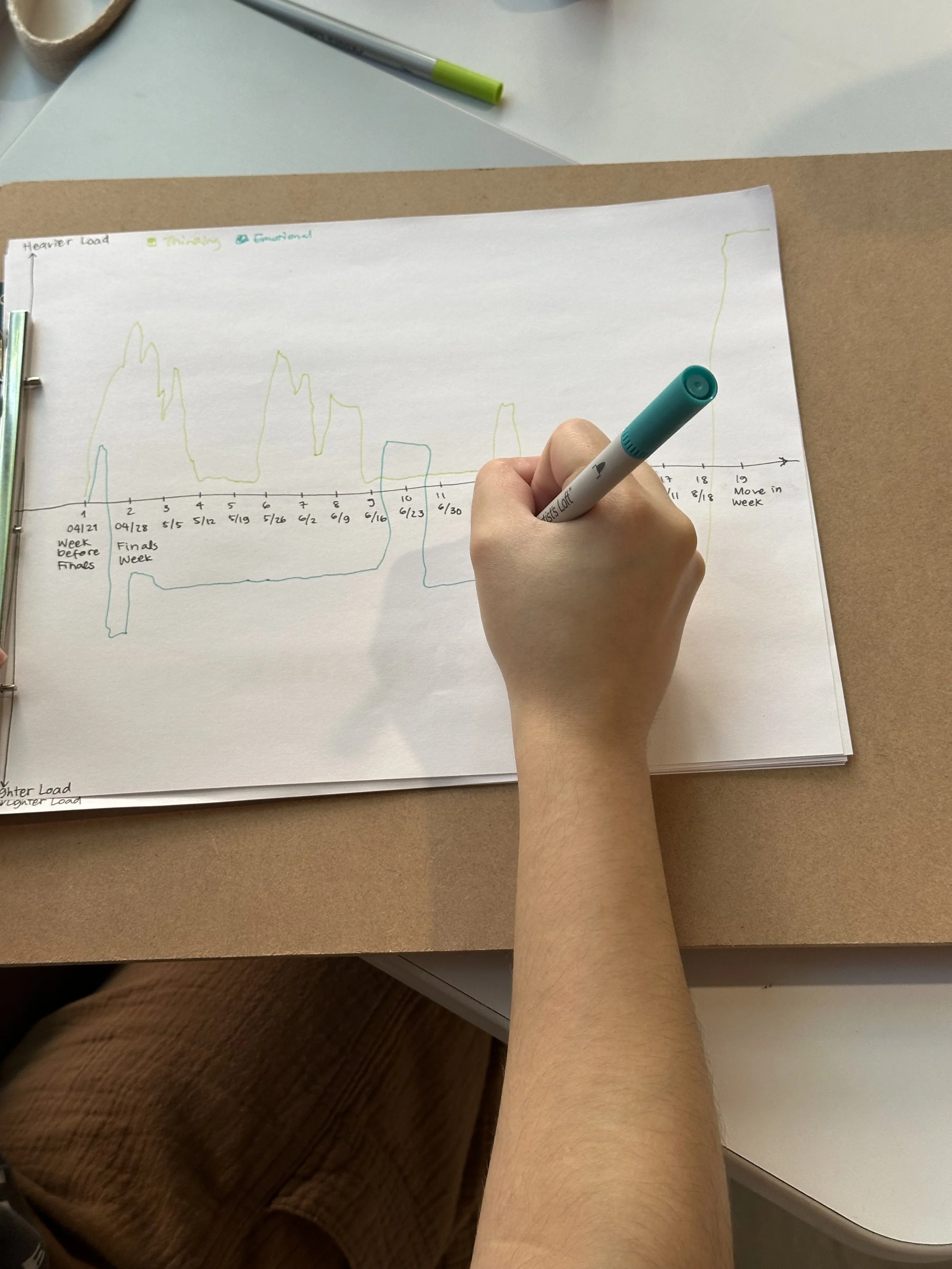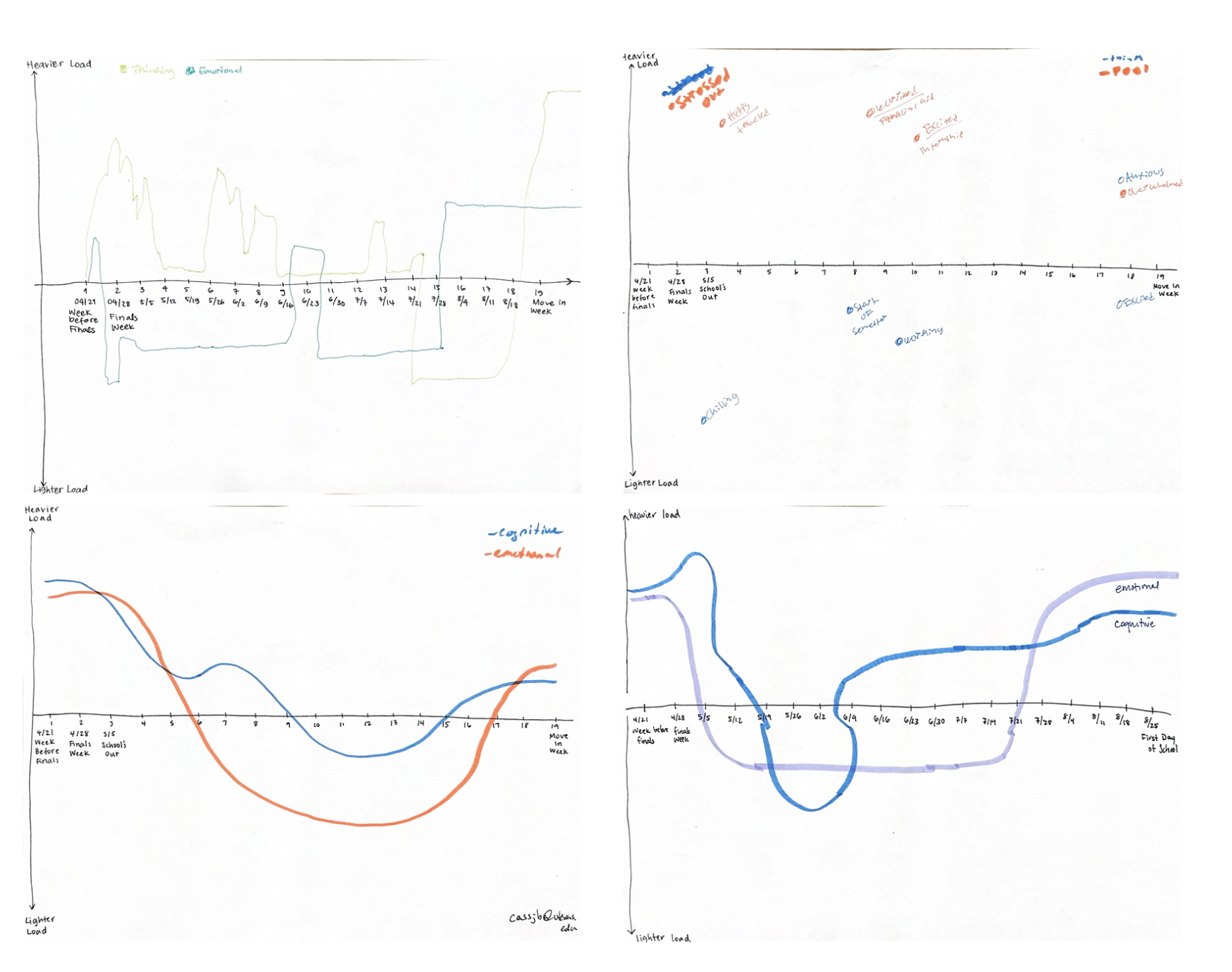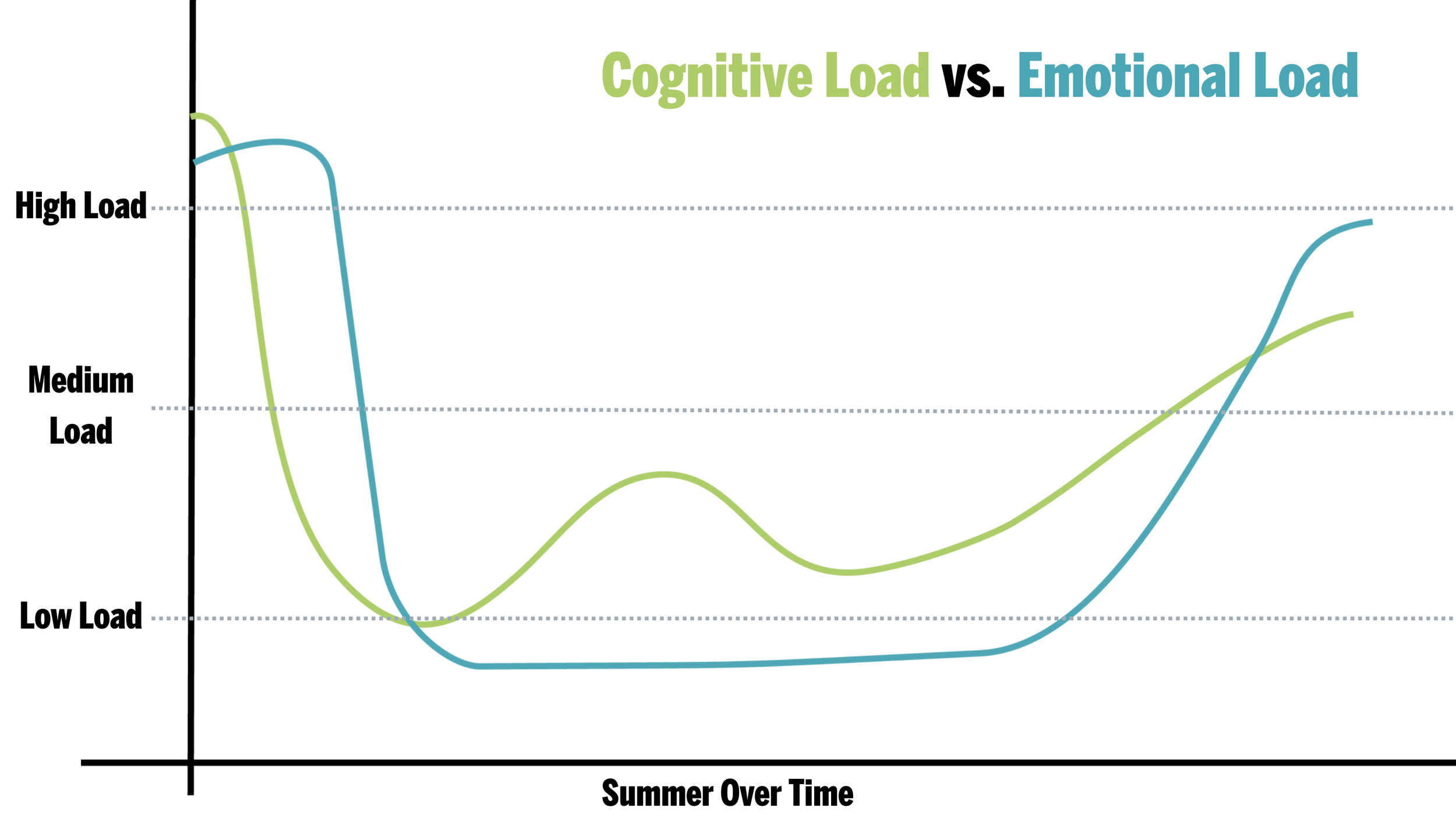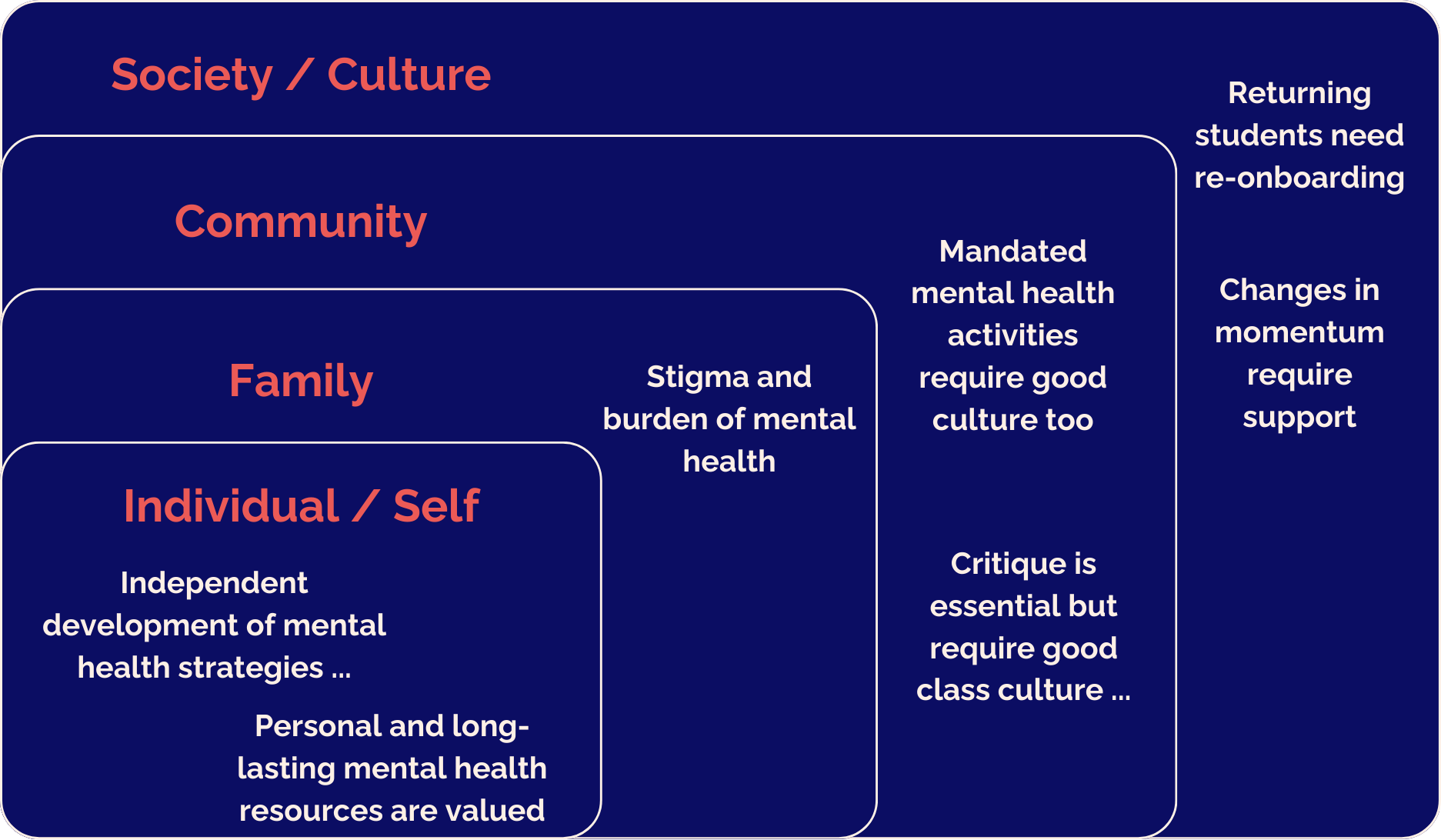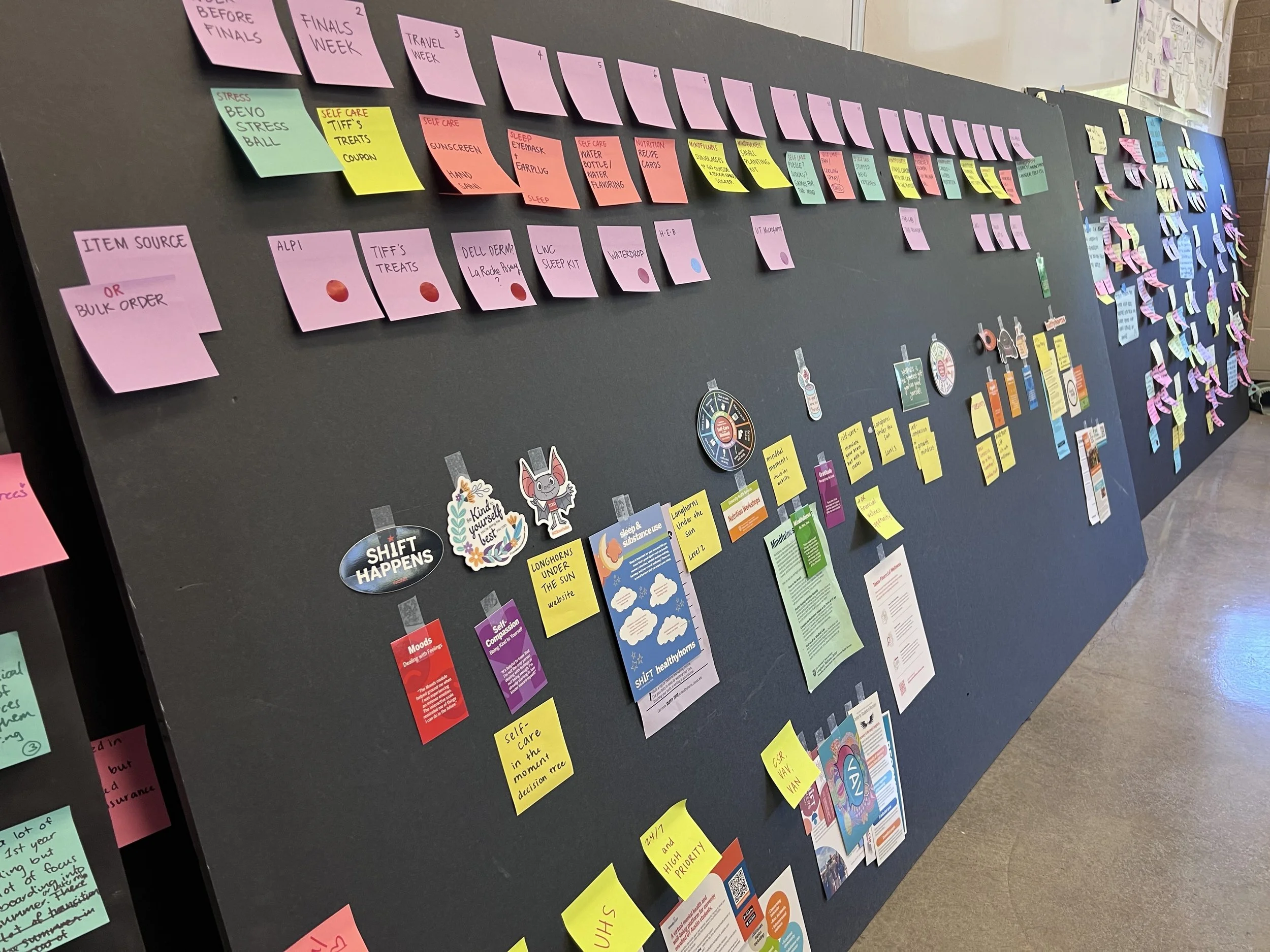Bevo’s Tower of Treasures
18 weeks full of surprises aimed at improving college students’ mental health and well-being
Team: Valencia Agatha, Leslie Scherger, Rodger Rivera, Natalie Lim
Role: Design Researcher; Content Writer
Timeline: 15 weeks
Stakeholder: HealthyHorns (UT Austin)
Quick Links:
Background
College students often face mental health challenges throughout their undergraduate careers. Universities often provide resources for their students throughout their attendance, but students often underutilize these or the services are insufficient for the size and needs of the student body.
At the University of Texas at Austin, student health is one of the pillars of Student Affairs. Health at UT is provided by HealthyHorns who divide themselves into physical health (University Health Services), mental health (Counseling and Mental Health Center), and well-being (Longhorn Wellness Center). Our MA Design program was approached by HealthyHorns to address student mental health within the College of Fine Arts (CoFA).
Our group was specifically tasked with addressing mental health during the summer period.
Research
The current health system at UT Austin is large and serves a very diverse and unique population. We began our research with secondary sources, trying to understand how the current system operates at UT Austin and what other universities in the United States are doing to promote students’ mental health and well-being. We also wanted to understand where some of the pain points were for students.
When we talked with a representative from HealthyHorns, they told us “[they] hadn’t really thought about summer.” Summer is a unique time in students’ lives because there are a wide variety of activities students complete during this short 2-3 month period with different locations, housing situations, financial situations, and local resources. Summer is also unique in the way that each academic semester (spring and fall) serves as a bookend.
Research Goal
Understand factors affecting the mental health and well-being of returning CoFA students during their summer break and the transition into/out of it
Research Questions
We drafted research questions based on the individual student, the system (UT Austin), and their context. We also wanted to look for possible areas of inspiration and innovation and drafted ideas for areas that analogous research would be fruitful.
Individual
How do CoFA students use University resources (housing, dining, UHS/CMHC, tutoring, and advising sectors) during the school year vs the summer?
What are some external and internal expectations (internship, working, summer classes, publishing their artwork, taking a break) CoFA students have for themselves for the summer break?
How and where do CoFA students spend their time during the summer?
System & Context
Context: What socioeconomic factors differentiate students’ experiences during the school year vs. the summer?
System: How does UT Austin prepare CoFA students for the transition into and out of the summer period?
Analogy
How does <group/organization/program> connect <group of people who spend a period of time outside their traditional environment, maybe periodically> with resources to promote well-being during their off season/period?
Ideas:
Seasonal workers
Touring musicians & Health Alliance for Austin Musicians (HAAM)
Parents & paternity leave
In-season / Off season athletes
Military personnel
School psychologists / K-12 students
Patients & hospital discharge
8 Card Sorts
Students were asked to sort 8 cards of mental health/wellness resources from most used to least used. Students identified family, friends, and personal coping strategies as the most used resources. The University’s Counseling and Mental Health Center (CMHC) and Longhorn Wellness Center (LWC) were the least used resources, with none of the 8 participants using or knowing about the LWC.
5 Faculty Interviews
Understanding faculty and staff’s opinions on students’ mental health and the solutions for it were important to account for formal and informal support systems that are implemented across departments and classrooms. We interviewed 1 College of Fine Arts (CoFA) professor who serves as a Well-Being Collaborating Faculty, 1 representative from CoFA’s Student Affairs office, 1 staff member from CoFA’s Career Services office, and 2 professors from the College of Pharmacy who also serve as Well-Being Collaborating Faculty.
These interviews revealed that faculty find talking about mental health and well-being with students challenging at times, but once this barrier is lowered with initial conversation, they feel much more at ease with assisting and guiding students. Programming in the College of Pharmacy has been successful and is a model to follow, but professors do note that flexibility and independent time off trump well-being activities. And finally, we found that while the offices of Career Services and Student Affairs are open for all students during the summer months, they mainly focus on new student orientation.
4 Student Interviews and Journey Maps
We conducted student interviews to better understand how students experience summer, specifically what challenges and joys arise during this period. Students were asked to map out their summer and discuss how they coped with their trials and celebrated their successes and moments of delight.
Students revealed that a lack of structured mental health guidance can lead to “on-the-fly” coping mechanisms that – while useful and certainly able to address problems – are unable to tackle issues at their roots. Thus, their obstacles can snowball and become much larger and burdensome to resolve.
7 Cognitive-Emotional Load Maps
During the later prototyping phase, we realized we needed to better understand the students’ summer rhythm in terms of their cognitive and emotional loads. We surveyed 7 students and had them fill out a graph depicting their cognitive and emotional loads over the course of the past summer (in different colors).
We compiled these load maps into a cohesive picture of a student’s summer: students have a high cognitive and emotional load during finals, but while the cognitive load decreases soon after the end of finals, the emotional load of the semester ending continues and later drops off to lower than students’ cognitive load.
Research Methods
“Some students would rather have a day off than the well-being day. Prescribed wellbeing activities are not the answer — it needs to be flexible and voluntary.”
“Faculty commonly say they feel like they need permission to ask students how they are doing — they feel nervous & uncomfortable.”
“Our primary focus during the summer is new student orientation.”
Research Insights
-
UT resources and apps can feel like they provide limited support; some feel that the resources at UT/apps are non-engaging
“UT resources feel impersonal so I stay out of it.”
“I wish the therapy program at UT had more sessions”
“I use a therapist outside of UT because I wanted a longer-term relationship”
How Might We…
encourage meaningful, personal connections with UT mental health resources, increasing their perceived value?
empower students to develop lifelong strategies for when they leave school?
-
Students gain new perspectives when learning about strategies from teachers, mentors, or somebody with more experience in the field.
“I learned how to practice effectively from my professor who also had ADHD, who taught me to limit and disperse my practice times.”
Facing adversity helps students grow, but without sufficient tools in their belt, they have to find ways to cope with their struggles on the fly.
“I usually use grit and determination to get through hard times. Over the summer I used the UT Crisis Hotline, but haven’t used CMHC since.”
“It sucks because not everyone has this strategy yet (to cope with losses and criticism).”
How Might We…
equip students with resilience strategies in a supportive and proactive way, so they feel empowered to navigate difficulties without facing struggles alone?
help students identify and evolve ineffective resilience strategies, encouraging them to adapt to personal and external changes for better outcomes?
-
Comparison with peers seems almost required in art, but how students deal with that comparison depends on the resiliency of the coping strategies they’ve already developed.
“ I realized that I was the worst one in the group, but I knew that I could grow.”
“Mistakes during practice get exposed to the crew, and embarrassment comes out of that.”
Critiques can be damaging if students heavily associate themselves with their art
“In creative arts, we have an emotional connection to to our work - if that is critiqued, it is a reflection of your work; you might feel like a waste.”
How Might We…
create a culture of safety amongst CoFA students so that students do not feel attacked during critiques but rather supported throughout their learning journey?
-
Blatant programming of assignments about mental health and wellbeing aren't helpful to students long-term — they are band aids and not long-term solutions
“Some students would rather have a day off than a mandatory wellbeing day.”
Flexibility and personal decisions about how someone spends their time (in relation to mental health and healing) are very important and valued by students
“All the stresses came from the places I was, where I couldn’t leave.”
“Prescribed wellbeing is not the answer—it needs to be flexible and voluntary.”
How Might We…
help students not only develop but also practice strategies?
engage all parties in creating a culture that prioritizes mental health and wellbeing?
interweave mental health and wellbeing practices into their everyday environment to create a more supportive culture?
-
There is structure in the academic year that is not necessarily present in the summer, so students must take on the mental load of creating structure in their summer
“The harder part of summer is having to create your own schedule. It’s hard to stay determined for summer courses”
“I think I finished finals on Monday and I immediately went back home and started working on Tuesday or Wednesday.”
“Spring this year was unique because of world events and protests that changed the dynamic right before the semester ended.”
How Might We…
create closure for students when finals end and break begins to prevent feelings of abandonment and provide time for reflection and preparation?
help students navigate their transitions into the summer?
-
Students identify that it is hard to talk to their families about mental health because of stigmas around it, but will go to their families for support when they are struggling
“In my Hispanic community at home, mental health is not what they think about so no one is there to talk to there about it.”
“There’s a stigma in the Black community about mental health so I haven’t talked about it with my family when I go home over summer.”
“I don’t want to put pressure on my family.”
“I can’t talk to my parents about mental health before talking to my therapist.”
How Might We…
help students comfortably discuss mental health with loved ones while ensuring continuous support, even when external resources become unavailable over the summer?
help students create a multifaceted support network that fosters a sense of community, even during the summer months?
-
During the summer, UT is focusing on new student orientation, so they do not prioritize advertising services for returning students.
“As a super senior, a lot of my friends graduated last year, so I wished that there were more CoFA events in the summer so I could’ve met new people.”
“Students are angrier and more anxious earlier on in the semester.”
“Going back to school after spending the majority of summer alone can be very tiring - I enjoy going to school, but interacting so much is not easy for me.”
Returning students may not be aware of all resources available to them, and if they aren’t aware, they can’t use them.
“There are not a lot of UT resources.”
“How do I access CMHC? Could I use it during the summer?”
“Continuing students can always get to us in the summer if they want/need, but there’s generally less volume.”
How Might We…
identify and address the unique struggles of returning students, ensuring they receive focused support during their re-onboarding alongside new student orientation efforts?
show returning students that UT cares about their summer well-being?
Concept Development
Insight Prioritization:
We sorted our insights in two ways:
High/Low Pain Point vs. Cause/Effect
Ecological Modeling
We focused on insights that addressed high pain points and root causes in order to create lasting and impactful changes. Insights focused on effects would not address the appropriate upstream causes that could more fully address the issue.
The ecological model allowed us to see which insights would be easiest and most impactful in the lives of the students. We recognize that culture changes require extensive time to fully implement, and community changes require large-scale buy-in from professors, students, deans, and other parties. However, more individual- and family-dependent insights may not be as useful to the wider CoFA student population.
Three Concepts:
-
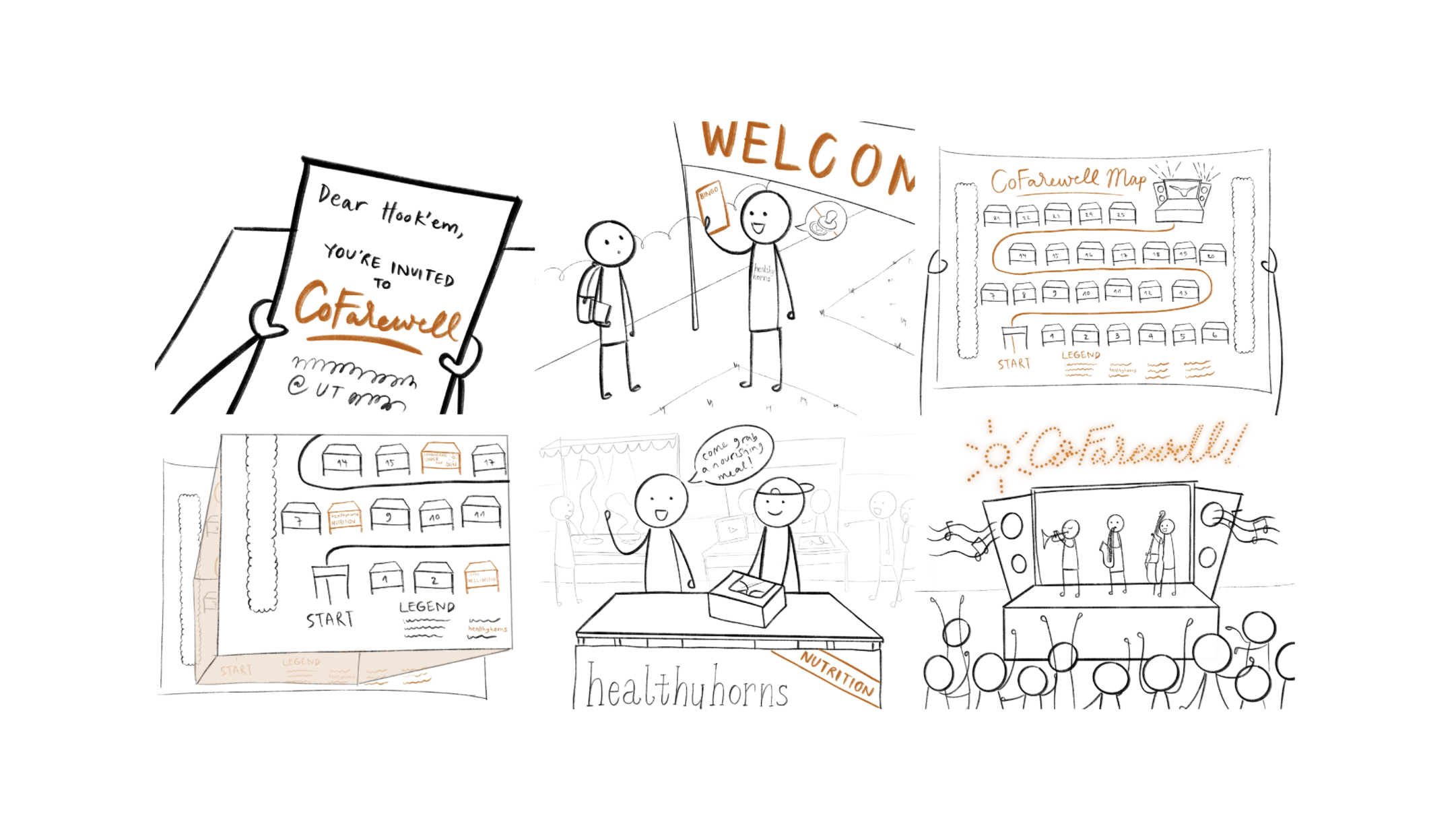
CoFarewell
An end-of-year CoFA project showcase, highlighting students’ hard work and fostering community. In between project showcase booths, multiple HealthyHorns booths focusing on unique wellness and health topics will provide students with practical advice and resources
-

Summer Countdown
A summer advent calendar with well-being treats and tools to support students during summer and help them prepare for the school year. In the fall, they’ll receive personalized recommendations for wellness based on their favorite treats and tools from the summer.
-

Re-Orientation
A “re-orientation” designed to showcase campus resources and supplemented with well-being exercises and live music. This event aims to strengthen connections with professors and peers and will conclude with a symbolic New Year Eve-style countdown to mark the start of the academic year
Prototyping
“I like how these items can teach students to create a habit that they can take with them to the school year.”
“Calling it summer countdown creates feelings of wanting summer to be over ... let's go"
“The gratitude journal might be too early. I'm starting work, starting summer classes, so I wouldn't personally want to do that right after finals.”
Iteration and Refinement
We created a week-by-week calendar to focus on these high and low points of stress to more accurately fulfill the needs of students every week. We sourced possible treats and tools from campus resources (Texas OneStop, HealthyHorns, Admissions, Texas Financial Wellness) to put inside our final prototype.
We developed a low-fidelity physical prototype and asked some of our student interviewees to run through our proposed program.
Students provided valuable insight into the timing of our product delivery and affirmed our decision to focus on mind, body, and soul topics that are repeated throughout the summer to reinforce the importance of caring for all aspects of health. They also provided some input on branding and frequency of product distribution.
These insights from prototyping guided us to circle back to our research. We completed intercept exercises with students around the CoFA buildings to explore the cognitive and emotional load maps discussed earlier (“Research”).
Future Steps
Utilize intercepts or further prototyping sessions to design an optional social component for students
1
Creation and iteration of high-fidelity prototypes
2
Working with the Longhorn Wellness Center to:
Source Items
Design packaging and advertising
Financial planning and creating budget estimates
Launch a pilot project in the upcoming summer
